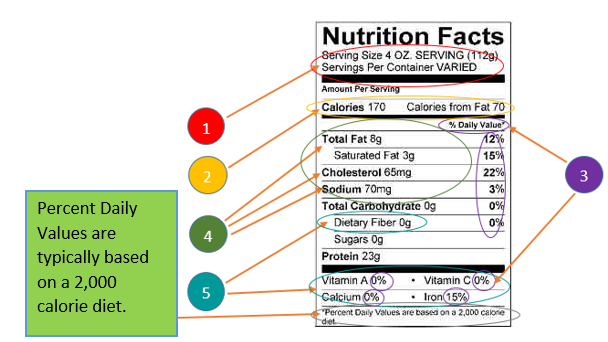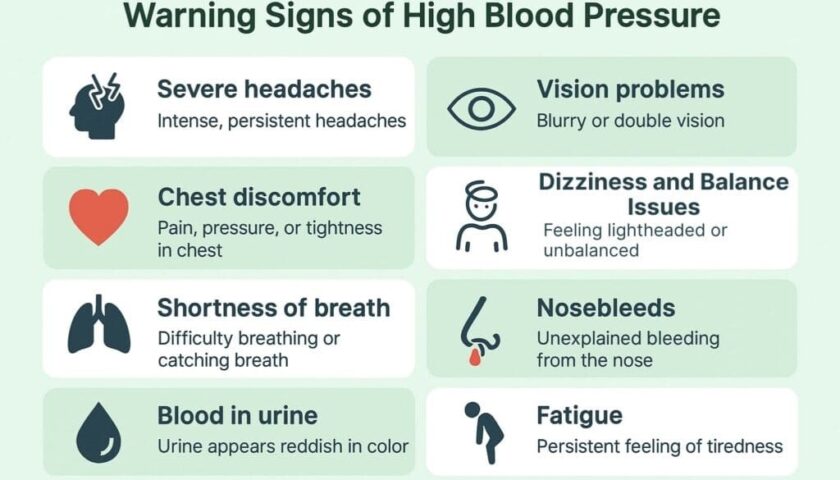From Pantry to Plate: Your Roadmap to Healthy Grocery Shopping in India
By: Saika J
In today’s fast-paced world, navigating the grocery aisle can feel like deciphering a secret code. But worry not! With the right tools and a little know-how, you can transform food labels from cryptic messages into clear roadmaps for healthy eating.
The Indian Council of Medical Research (ICMR) emphasizes the importance of informed food choices, and food labels are your key allies in this journey. Here, we’ll delve into the essential elements you need to look for to make healthy and satisfying purchases, while keeping your specific needs and preferences in mind.
Ingredients List: Unveiling the Building Blocks
Think of the ingredients list as a behind-the-scenes peek at what goes into your food. Here’s how to unlock its secrets:
- The Starring Roles: Ingredients are listed in descending order of weight, meaning the first few items make up the bulk of the product. Look for whole, recognizable foods like “whole wheat flour,” “skinless chicken breast,” or “fresh spinach.” These are generally healthier options than highly processed ingredients.
- The Supporting Cast (and the Ones to Avoid): Be wary of products with a long list of unrecognizable additives, preservatives, and chemicals represented by complex scientific names. These can often be high in sodium, unhealthy fats, or added sugars. Delhi-based nutritionist Rashmi Awasthi advises prioritizing products with a shorter ingredients list and familiar components.
- Sugar in Disguise: Watch out for hidden sugars lurking under various names like “high fructose corn syrup,” “corn syrup solids,” or “maltodextrin.” These add sweetness without essential nutrients and can contribute to health problems like obesity and diabetes.
Nutrition Facts Panel: The Numbers Tell the Story
The nutrition facts panel is a treasure trove of information. Let’s crack the code together:
- Serving Size Matters: This is crucial for accurate comparisons. Pay attention to both the serving size and the number of servings per container. Don’t be fooled by a small serving size with high calorie or sodium content.
- Calories: Your Energy Gauge: Calories provide energy, but too much can lead to weight gain. Consider your daily calorie needs and choose products that fit your goals.
- Fat Breakdown: Not all fats are created equal. Focus on limiting saturated and trans fats, which can raise bad cholesterol and increase the risk of heart disease. Look for products with healthy fats like monounsaturated and polyunsaturated fats, often found in nuts, seeds, and olive oil.
- Sodium: Keeping Your Blood Pressure in Check: High sodium intake is linked to high blood pressure. Be mindful of the sodium content, especially if you have pre-existing health conditions. “Low sodium” or “no added salt” options can be helpful choices.
- Carbohydrates: Your Body’s Fuel Source: Carbs provide energy, but the type matters. Choose complex carbohydrates like whole grains, fruits, and vegetables over refined carbohydrates like white bread, pastries, or sugary drinks. These complex carbs offer sustained energy and valuable nutrients like fiber.
- Fiber: Your Gut’s Best Friend: Aim for a good amount of fiber in your diet. It promotes gut health, supports digestion, and can help you feel fuller for longer.
- Sugars: Sweetness with Caution: Naturally occurring sugars like those found in fruits are different from added sugars. Minimize added sugars, which offer empty calories and contribute to health problems.
- Protein: Building Blocks for Your Body: Protein is essential for building and repairing tissues. Choose lean protein sources like chicken, fish, beans, or lentils.
- Vitamins and Minerals: These micronutrients are vital for overall health. Look for products fortified with essential vitamins and minerals like Vitamin D, calcium, or iron.
Making Informed Choices for You and Your Family
Now that you’ve mastered the basics of label-reading, let’s explore how to tailor your choices to specific needs:
- Living with Allergies or Sensitivities: Carefully review the allergen information section to identify potential triggers like nuts, soy, wheat, or shellfish. Food labels are required to clearly highlight common allergens, empowering you to make safe choices.
- Dietary Preferences: Whether you’re vegetarian, vegan, gluten-free, or following a specific diet, food labels can be your guide. Look for certifications like “organic,” “non-GMO,” or “gluten-free” to align with your preferences. However, remember that these labels don’t necessarily guarantee overall health benefits.
Beyond the Label: Unveiling Hidden Ingredients
While food labels are a valuable tool, some hidden ingredients can still slip through the cracks. Here’s how to be extra vigilant:
Sugar by Another Name: Manufacturers may use various names for added sugars, making them
Manufacturers may use various names for added sugars, making them harder to detect. Here are some common culprits to watch out for:
* High fructose corn syrup
* Corn syrup solids
* Maltodextrin
* Dextrose
* Sucrose
* Fruit juice concentrate (unless 100% juice)
* Agave nectar
* Honey (use sparingly)
Sneaky Sodium Sources: Sodium can lurk in unexpected places. Look out for ingredients like:
-
- Monosodium glutamate (MSG)
- Sodium bicarbonate (baking soda)
- Sodium nitrate/nitrite (preservatives)
- Hydrolyzed vegetable protein (HVP)
- Disodium phosphate (leavening agent)
Unhealthy Fats in Disguise: Hydrogenated and partially hydrogenated oils are sources of unhealthy trans fats. Check the ingredients list and avoid products containing them. Additionally, be mindful of saturated fat content, especially in processed meats and baked goods.
Empowering Yourself: Taking Control of Your Grocery Choices
With the knowledge you’ve gained, you’re well-equipped to navigate the grocery store with confidence. Here are some additional tips to empower yourself:
- Plan Your Meals: Having a meal plan helps you create a grocery list and avoid impulse purchases. Look for recipes that incorporate whole, unprocessed ingredients.
- Shop the Perimeter: The perimeter of the grocery store typically houses fresh produce, dairy, and meat. These are generally healthier options compared to the center aisles, often stocked with processed foods.
- Don’t Be Afraid to Compare: Compare similar products side-by-side to find the one with the most favorable nutritional profile. Pay attention to serving sizes and nutrient content per serving.
- Embrace Fresh and Frozen: Fresh fruits and vegetables are excellent sources of vitamins, minerals, and fiber. However, frozen options can be just as nutritious and often more affordable.
- Read Reviews and Research Online: Do your research! Look for reviews and information about specific products online. This can help you learn more about the ingredients and potential health benefits or drawbacks.
Remember: Food labels are a powerful tool, but they shouldn’t be the only factor influencing your choices. Consider your taste preferences, dietary needs, and budget when making decisions.
Making Healthy Eating a Sustainable Lifestyle
Building healthy habits takes time and effort. Don’t be discouraged by occasional slip-ups. Focus on progress, not perfection. Here are some encouraging words to keep you motivated:
- Start Small: Begin by incorporating small changes into your routine. Gradually swap sugary drinks for water, add more fruits and vegetables to your meals, or choose whole-grain options over refined carbohydrates. Small steps lead to big results over time.
- Celebrate Your Wins: Acknowledge your progress, no matter how small. Celebrate the healthy choices you make and the positive impact they have on your well-being.
- Cook More at Home: Cooking at home allows you to control the ingredients and portion sizes. Experiment with new recipes and discover healthy and delicious ways to nourish your body.
- Make it Fun!: Involve your family in the grocery shopping and meal preparation process. Make healthy eating an enjoyable experience for everyone.
The Allure of Flavor: Understanding Taste Enhancers and Making Informed Choices
Food labels can tell you a lot about the nutritional content of a product, but they often don’t reveal the secret weapons manufacturers use to make their offerings so irresistible: taste enhancers. These ingredients can make food more palatable, but it’s important to be aware of their potential impact on your health and eating habits.
The Science of Flavor: Our sense of taste is a complex interplay of taste buds, olfactory receptors (smell), and the trigeminal nerve (texture). Food manufacturers leverage this science to create highly palatable products. Here are some common taste enhancers to watch out for:
- Monosodium Glutamate (MSG): This widely used flavor enhancer triggers glutamate receptors on the tongue, intensifying savory flavors. While generally considered safe by regulatory bodies, some people report experiencing headaches, dizziness, or numbness after consuming MSG.
- Sodium: Salt enhances flavors and is a common ingredient in processed foods. However, excessive sodium intake can contribute to high blood pressure and other health problems.
- Sugars: Added sugars, including high fructose corn syrup, can make food taste sweeter and more appealing. However, consuming too much sugar is linked to weight gain, diabetes, and other health issues.
- Fats: Fats, particularly saturated and trans fats, contribute to a creamy mouthfeel and enhance flavors. However, unhealthy fats can increase your risk of heart disease, stroke, and certain types of cancer.
- Acids: Acids like citric acid and malic acid can add a tangy or sour flavor dimension, making food more interesting. While generally safe in moderation, excessive intake can irritate the digestive system.
Making Informed Choices: Understanding taste enhancers empowers you to make conscious dietary decisions. Here’s how:
- Read Food Labels Carefully: Look for ingredients like MSG, added sugars, and hydrogenated oils. High sodium content can often be identified by checking the sodium level per serving.
- Opt for Whole Foods: Whole, unprocessed foods like fruits, vegetables, and lean proteins tend to rely less on artificial flavor enhancers.
- Embrace Natural Flavors: Experiment with herbs, spices, and other natural flavorings to add taste and complexity to your meals.
- Cook More at Home: Cooking at home allows you to control the ingredients and limit the use of artificial flavor enhancers.
Remember: Taste preferences are subjective. While some people find certain enhancers highly appealing, others may be more sensitive to their effects.
Breaking the Cycle of Cravings
Highly processed foods often rely heavily on taste enhancers, which can trigger cravings and lead to overconsumption. Here are some tips to break the cycle:
- Focus on Nutrient-Dense Foods: Prioritize foods rich in vitamins, minerals, fiber, and healthy fats. These foods are naturally more satisfying and can help curb cravings for processed options.
- Practice Mindful Eating: Pay attention to hunger and fullness cues. Eat slowly and savor your food, allowing your body to register satiety signals.
- Don’t Deprive Yourself: Occasional indulgence is okay. The key is to maintain a balanced diet and avoid relying heavily on processed foods.
- Seek Support: If you struggle with unhealthy eating habits, consider seeking guidance from a registered dietitian or nutritionist. They can help you develop a personalized plan for healthy eating and achieving your goals.
By understanding the science behind taste enhancers and making informed choices, you can create a more mindful and balanced approach to your diet. Remember, healthy eating doesn’t have to be bland! Experiment with fresh ingredients, natural flavors, and cooking techniques to discover a world of delicious and nutritious possibilities.






